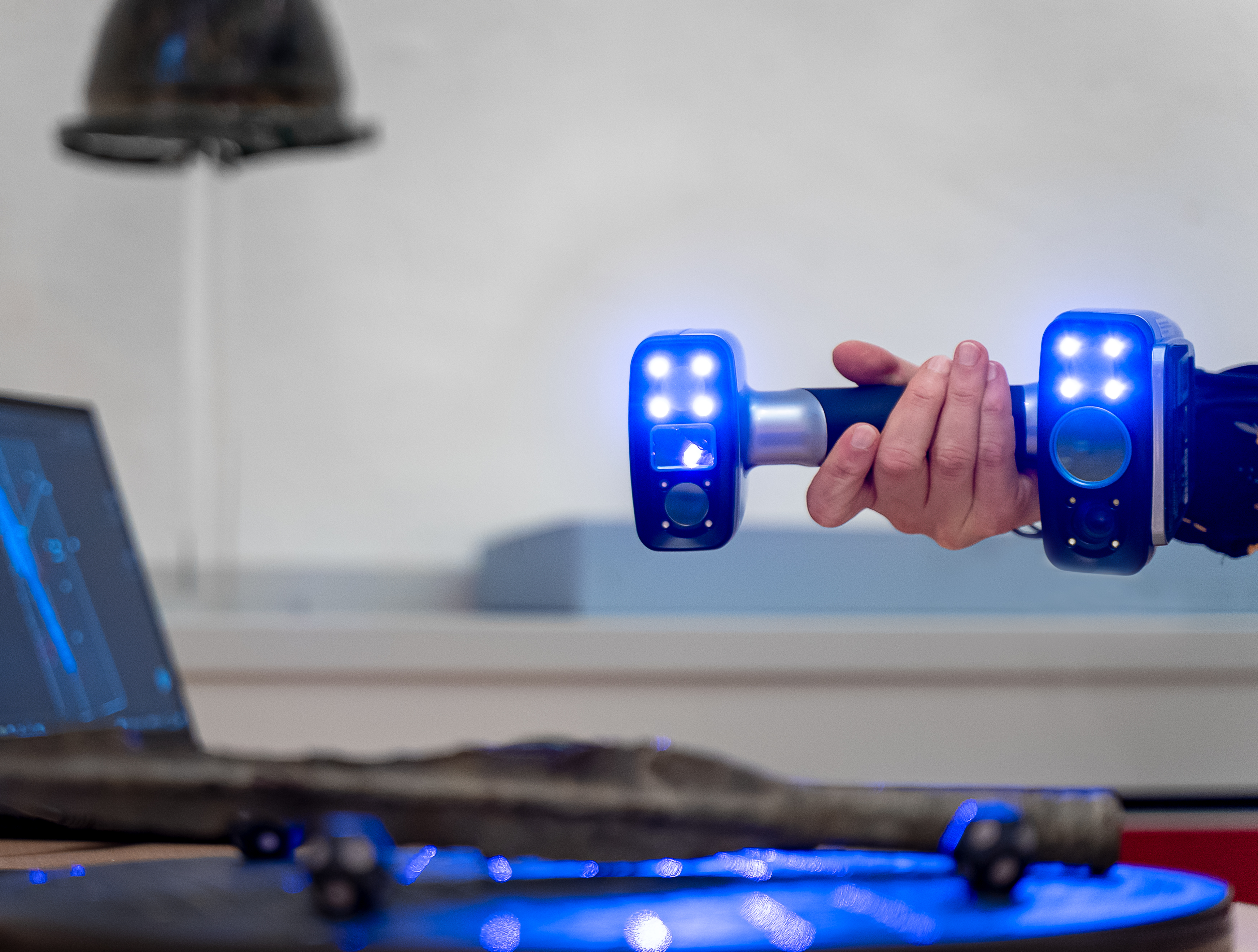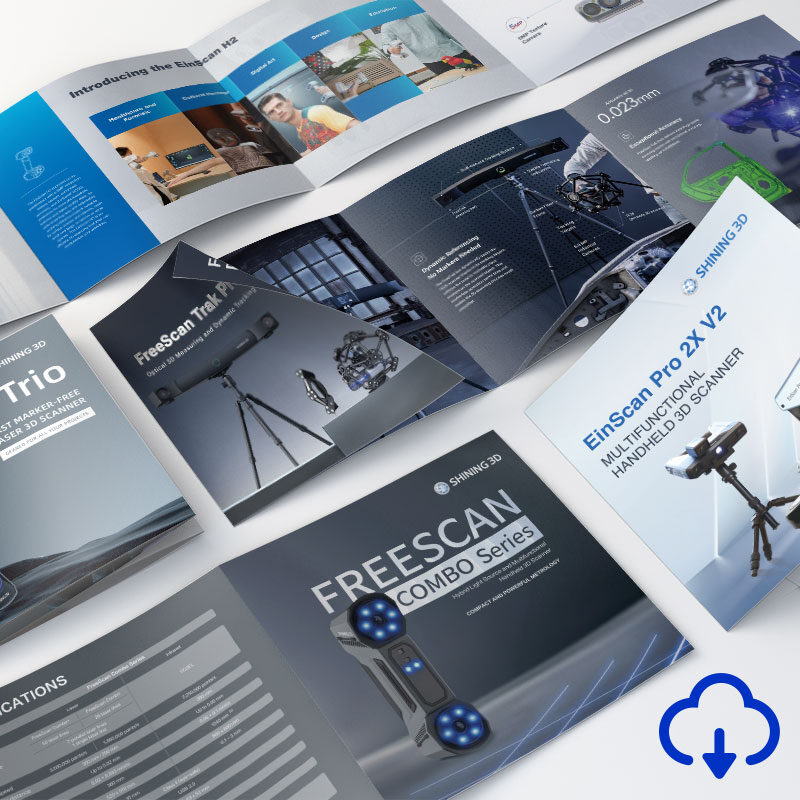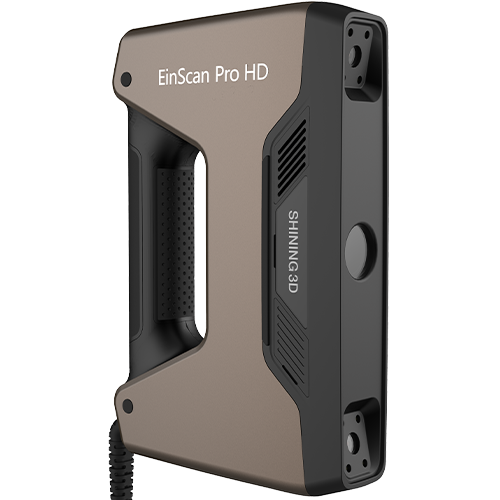
Case Studies
Published on Jun. 2nd 2023
3D Scanning Challenges: Shiny, Dark, Colorful…
Have you ever wondered why your 3D scanner won’t capture a certain object? Or gotten frustrated by an incomplete 3D model result? There are several 3D scanning technologies – the main ones being structured light, laser triangulation, photogrammetry – but they all have the same pet peeves.
Introduction
Have you ever wondered why your 3D scanner won’t capture a certain object? Or gotten frustrated by an incomplete 3D model result?
There are several 3D scanning technologies – the main ones being structured light, laser triangulation, photogrammetry – but they all have the same pet peeves.
Some subjects are more likely to pose 3D scanning challenges:
● Highly detailed objects
● Dark surfaces
● Reflective or shiny coatings
● Bright, colorful patterns
● and Humans!
Fortunately, there are easy workarounds for each of these 3D scanning challenges. In this article we’ll look at the different techniques you can apply to 3D scan (almost) anything.
Highly-detailed objects
When capturing highly detailed objects, the default scan parameters may not capture sharp edges with sufficient detail. However, we also want the 3D data to represent the actual object as accurately as possible, without losing any details. By adjusting the settings, it is possible to obtain an accurate 3D model of such objects. One important setting you can adjust is point distance. By choosing a smaller point distance, you obtain a higher resolution.
With an adjustable resolution of up to 0.2mm, the EinScan Pro Series multifunctional 3D scanner is ideal for scanning detailed objects. It not only reproduces details well, but also provides great 3D scanning efficiency and a smooth user experience.

If you’re looking for the best 3D scanner for intricate details, you might want to opt for a desktop 3D scanner.
The EinScan-SE/SP, Transcan C, and the EinScan Pro Series (in tripod mode), for instance, are excellent options. The Transcan C, in particular, offers a resolution as high as 0.035mm.
However, keep in mind that a higher resolution means a denser point cloud. This implies more data and a larger file size. Plus, the more data the software must process, the longer it will take.
That’s why a fine resolution setting is mostly recommended for small or medium-sized objects. Larger objects can be time-consuming and labor-intensive to 3D scan with a desktop 3D scanner or tripod setup.
Make sure you consider your objects’ size before choosing a scanning method. The key is to find the right balance between scan quality and efficiency.

Discover the product you're looking for
- Full specifications
- Using scenarios
- Key features
- Even comes with a bundle!
Dark objects
If you’ve tried 3D scanning something dark and wondered why the results were poor, rest assured. Without the right preparation, dark surfaces are one of the most common 3D scanning challenges.
That’s because dark colors absorb much more light than others. It’s just like being under the sun: with a white t-shirt, we feel less heat than with a dark blue one.
3D scanners work by projecting light and “reading” how it bounces back (for lasers) or deforms (for light patterns, a.k.a. structured light). Since dark colors absorb more light, the 3D scanner can’t read the surface as well.
One workaround involves sticking markers, i.e., adhesive targets, which help the 3D scanner as sorts of beacons. Another solution is to apply white powder to the object. These options work well but can be time-consuming, messy, and not always suitable for delicate objects.
The good news is that not all light sources come equal. The more power the laser has, the less dark surfaces are a problem. Blue light is also more effective at capturing dark surfaces than white or red light. In short, it features a narrower wavelength, providing better resolution.
The EinScan HX, for example, is equipped with both powerful laser lines and blue LED light (in fast mode). These two technologies are able to capture dark surfaces efficiently, without necessarily having to use markers or white spray.
Our team 3D scanned the black lion sculpture below in minutes with the EinScan HX:

Reflective or shiny surfaces
Shiny, reflective surfaces are another common 3D scanning challenge. While dark colors absorb too much light, shiny surfaces reflect and disperse it too much.
Imagine how light bounces off in different directions from a mirror or a shiny metal part. And remember how 3D scanners work: by projecting a light source onto objects, to measure how they return to the scanner or deform. Reflections make the light hard if not impossible to read.
Nonetheless, shiny, metallic parts of some of the most commonly scanned objects in industries like machinery or automotive. So how do they do it?
This is where markers and light source power come back into the picture. More powerful and qualitative light sources will play a major difference in a 3D scanner’s ability to scan shiny surfaces. On medium and large-sized objects, markers may become unavoidable but guarantee excellent results. (Bonus: You can get magnet markers and vacuum them off with a simple filter, for quick, easy, and non-destructive removal.)
With its powerful laser source and its marker recognition capacity, the EinScan HX is also fit for this 3D scanning challenge. Actually, out of all the EinScan Series 3D scanners, it’s the only one that can effectively capture shiny objects.
Below is an example of a successful, metallic 3D scan with the EinScan HX:

Colorful object
When scanning brightly colored objects, it is critical to ensure that the data generated accurately reflects the object’s color information. This relies heavily on the texture camera’s pixel count, i.e. its digital resolution. Pixel count is measured in mega pixels (MP), with one MP equalling one thousand pixels. If the camera’s resolution is too low, it can cause color distortion.
Fortunately, all EinScan 3D scanners have the capability to collect texture data. The EinScan H and HX are equipped with color cameras, while color capture is available with a color add-on for the Pro Series.
Camera resolution varies from one 3D scanner model to another, to meet different budgets and specific use cases.
If you need the highest level of detail in terms of colors, the Transcan C 3D scanner is the ideal choice. This 3D scanner is equipped with an exclusive 12-megapixel texture camera, providing superior color detail with its higher pixel count.

Body scanning
When it comes to 3D scanning the human body, there are three additional challenges to consider:
● Keeping still
● Getting direct light in the eyes
● Successfully capturing hair (fine details)
For one, the subject needs to remain stationary during the scan. Any movement – even the slightest blink or shiver – may lead to inaccuracies in the final model.
Secondly, the intense LED light found in some scanners may cause discomfort or temporarily impair vision.
Last but not least, human hair is tricky to capture because of how thin it is.
Some specialized 3D scanners are able to address these 3D scanning challenges. The EinScan H and the Einstar are great examples. Our research team developed specific “non-rigid” algorithms in their software that automatically compensate for slight body movements. These 3D scanners also use infrared rays instead of LED light or lasers, removing any eye discomfort. Plus, infrared technology is effective at capturing both dark and light-colored hair.
For body 3D scanning, the EinScan H and Einstar (and their software) make for efficient allies.

Conclusion
While some surfaces pose a challenge for 3D scanners, it is possible to overcome these obstacles with the right combination of hardware and software.
The EinScan series covers all kinds of situations and budgets. Each EinScan 3D scanner has its own unique features and specifications that make them suitable for different users and applications.
If you are unsure about scanning a specific surface, please feel free to contact us for guidance and assistance in selecting the most appropriate scanning solution.
To dive deeper into 3D scanning, check out this article about “Things you should know before buying a 3D scanner“.
Our product selector is also a practical tool to find out which technology suits your use case. Take a minute to select your application, specification requirements, and get an immediate 3D scanner recommendation (no email, personal details, nor sign-up required).
Click on the image below to start your 3D scanner journey!

EinScan Pro HD
The EinScan Pro HD offers top-notch handheld scanning with high resolution and accuracy, perfect for designers and engineers. Its versatile design ensures reliability and efficiency in professional-grade 3D modeling.
- Impressive High Resolution
- Modular Design for Multi-Function
- Less Limitations of Scan Objects
